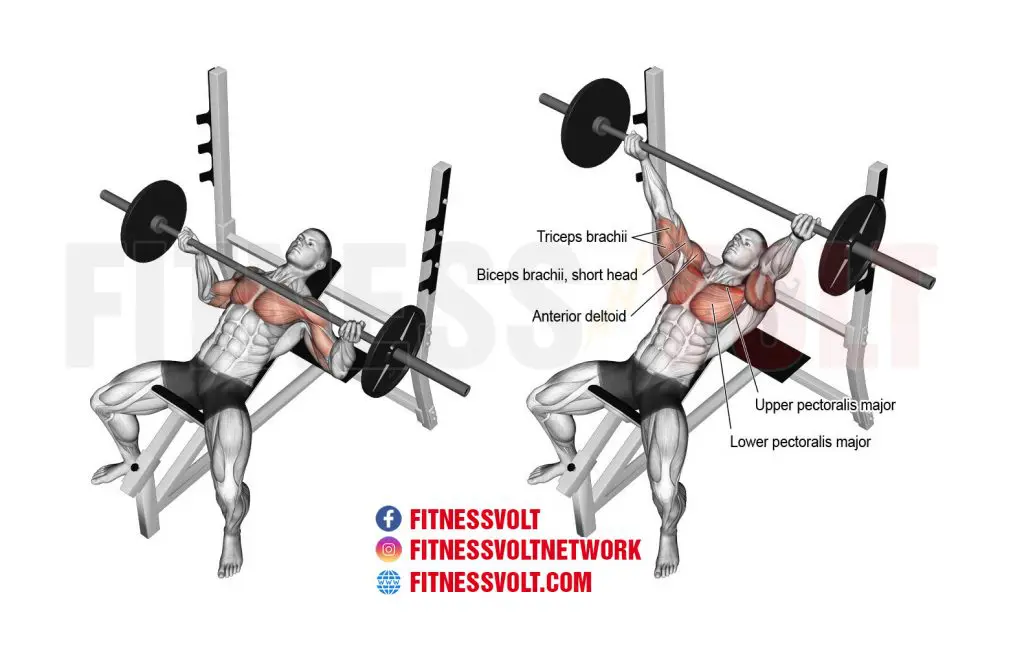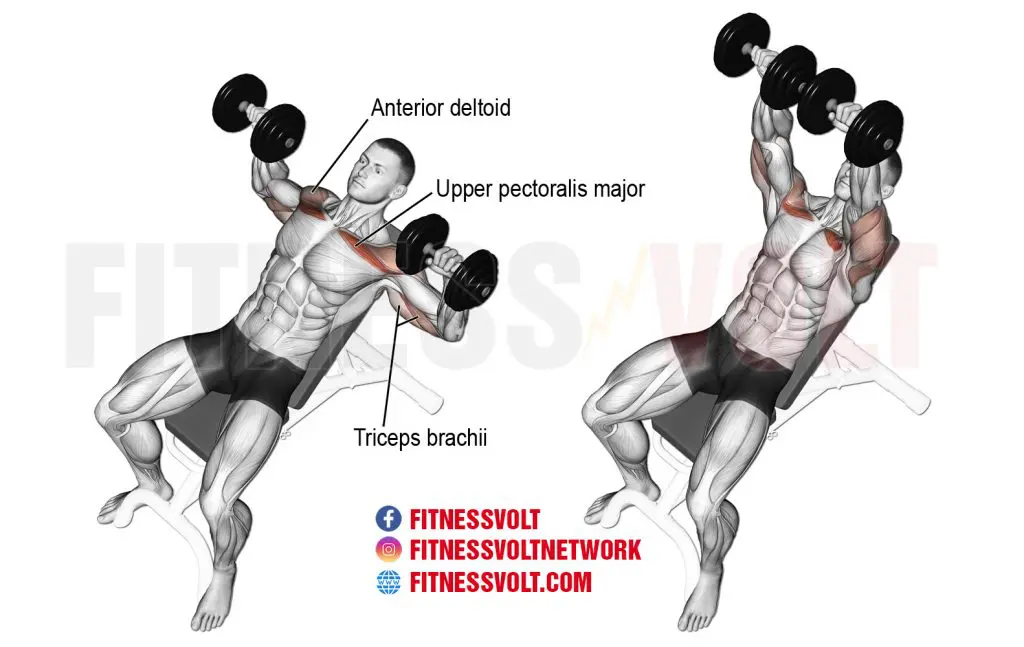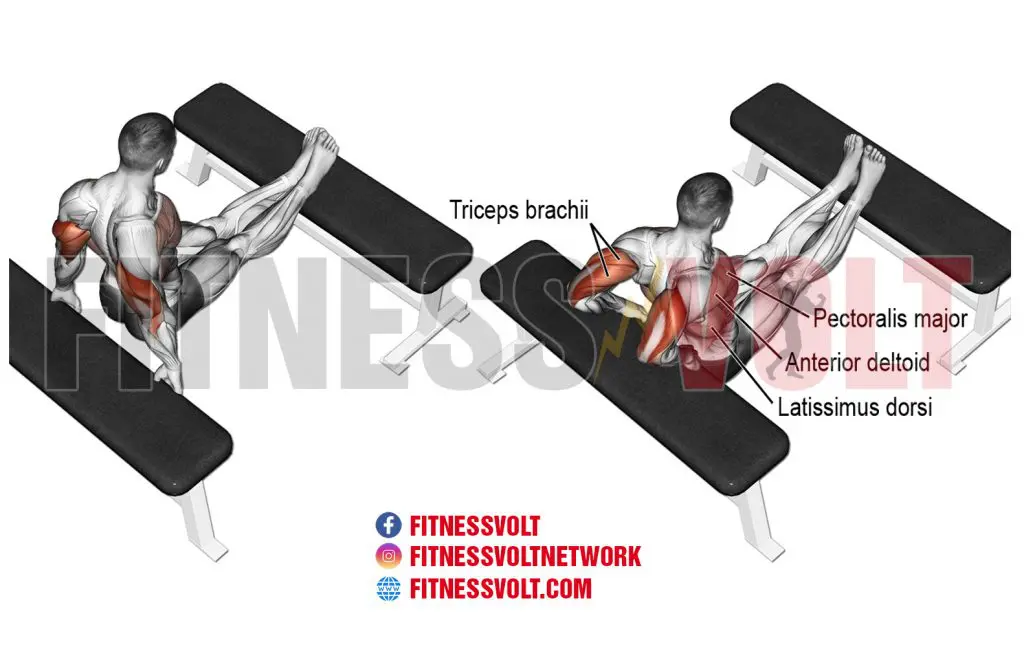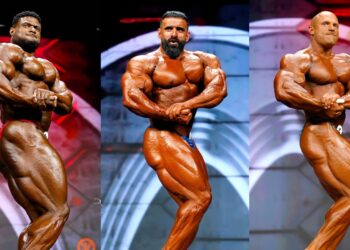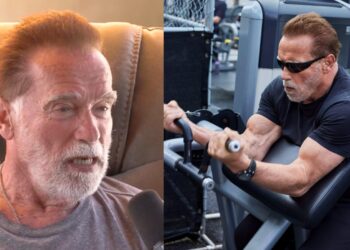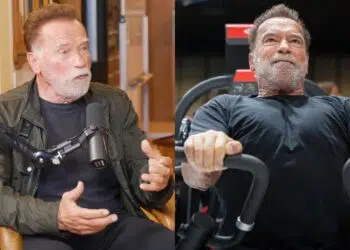Old-school bodybuilders like Larry Scott, Arnold Schwarzenegger, and Serge Nubret all had incredibly impressive physiques. And they sure as heck didn’t have access to the luxurious equipment or advanced training methods we have today.
But the Golden-Era guys were nothing like the bodybuilders of today. They just had a different aesthetic altogether, with a focus on a tiny waist, a big chest, and back, with proportional legs to match. And considering they didn’t have the variety of sports performance chemicals athletes have access to today (Nor did they take crazy amounts); they did pretty darn amazing.

And you want to know why?… because they trained using basic movements (And you can never go wrong there).
But an effective chest exercise should allow your joints to move naturally with the weight load going in the same direction of your muscle fibers. Working a muscle isn’t a complex process.
And that’s why old-school training methods are a great foundation to revert back too in a world of so many options…
Old-School Training Method
So, back in the day when the legends trained, they used simple training methods because machines and fancy devices were very limited. Cables and a few contraptions existed but free weights were the bread and butter.
Level Up Your Fitness: Join our 💪 strong community in Fitness Volt Newsletter. Get daily inspiration, expert-backed workouts, nutrition tips, the latest in strength sports, and the support you need to reach your goals. Subscribe for free!
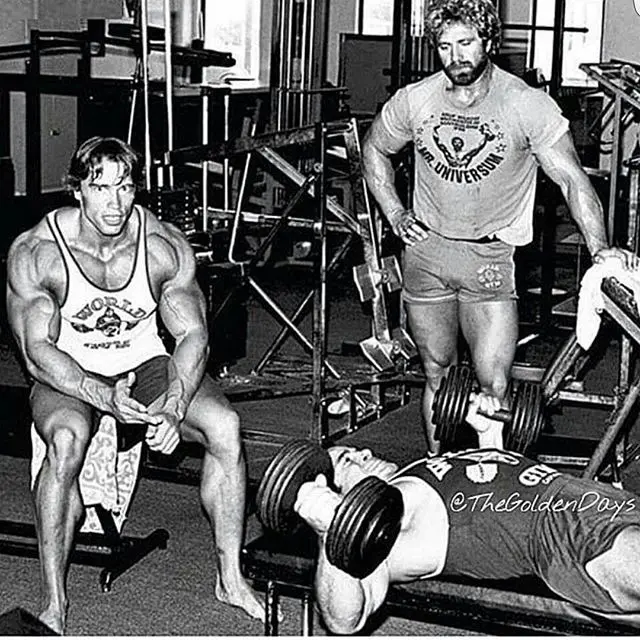
The typical workout involved a training split with high volume training and each muscle was worked two to three times per week, although, some people did lower volume and high intensity.
But back in Arnold’s days at Gold’s Gym Venice in the 70s, majority of competitors would train six days a week, while training even more frequently as a competition got closer. So, it wasn’t uncommon to see guys training the same muscle every other day.
And for cardio… many of the machines we have today didn’t exist. Many bodybuilders in the Golden-Era would mostly increase their heart rates and stay lean from their intense training regimes.
Supersets and pyramid training was pretty popular back then as well, and if you notice the pattern here… old-school training really paved the way for our modern-day training methods and techniques.
Old-School Chest Workout
Here’s a real old-school workout consisting of a few compound movements and an isolation exercise which should hammer your chest pretty good. You’ll want to obviously do a few warm-up sets by using the bar first and adding some weight until you get to your working sets.
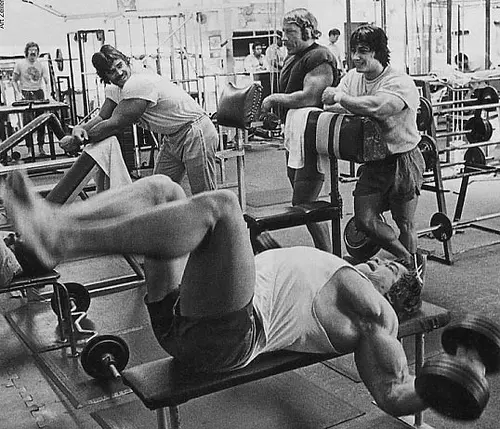
Stick with 3-4 sets of 8-15 reps per each exercise and rest 30-45 seconds in between sets. And don’t train with maximum poundages either. You want to challenge the muscles but too heavy and you will over stress your nervous system due to the higher volume of training.
And do this workout no more than twice per week.
Barbell Bench Press
Yes, the barbell bench press is old-school but it’s still just as popular today as it was in the Golden-Era. In one ACE-sponsored study, the bench press outperformed many of the most common chest movements when it came to electromyography (EMG) activity (activation of muscle fibers). (1)
So, it’s no wonder Monday is widely-known as “National Chest Day” with the bench press at the forefront of chest exercises performed that day.
But all jokes aside… the bench press allows you to use maximum poundages because the weight from the barbell provides a bilateral weight load distributed across the surface area of the chest and supporting muscles.
And you also work your triceps and front deltoids which is a direct result of doing compound movements.
To perform the bench press…
- Lie flat on the bench where you can comfortably unrack the weight and grip the bar slightly wider than shoulder-width distance apart.
- Tuck your elbows in at a 45-degree angle to your torso.
- Arch your back and place your feet flat on the floor under your butt.
- Unrack the bar and lower it to your to a few inches from your sternum.
- Press the weight while driving your feet to the floor and contract your chest muscles.
Do 4 sets pyramiding up in weight for 12-10-8-6 reps
Dumbbell Incline Press
Hitting the upper pecs near the clavicles is very beneficial for improving muscle development in this region. Now, you can’t actually single out the top half of the chest muscles (because that would just look weird). But you can emphasize the upper chest by doing inclines and contracting the muscle from a different angle.
Level Up Your Fitness: Join our 💪 strong community in Fitness Volt Newsletter. Get daily inspiration, expert-backed workouts, nutrition tips, the latest in strength sports, and the support you need to reach your goals. Subscribe for free!
And that’s why old-school training was so ahead of its time because bodybuilders knew that utilizing different angles was very effective for overall muscle development.
But to prove our point, one study using 14 trained males actually did show an advantage of the incline bench at a 30 to 45-degree angle for working the upper chest at certain points during the lift when compared to the flat bench. (2)
Now, dumbbell training requires more stabilization so you won’t be able to use as much weight. But you will develop and improve your stabilizer muscles which assist during the movement. And unilateral (affecting one side) training is very effective for muscle imbalances, isolation, building core strength, and even rehabilitation purposes. (3)
To perform the dumbbell incline press…
- Grab two dumbbells and sit on the edge of the incline bench with feet planted on the floor.
- Use the end of your left thigh to help you propel the left dumbbell back while lying down simultaneously; followed by the right dumbbell, until you’re lying flat against the incline bench.
- Tuck your elbows in slightly and press the dumbbells straight up and squeeze your chest muscles.
- Lower the weight until you feel a slight stretch and repeat.
Do 3 sets of 10-15 reps
Bodyweight or Bench Dip
The dip is one of the best exercises you can do using your own bodyweight. It’ll really target all three tricep heads and contribute to the sleeve-busting arm growth we all strive for.
How to perform the dip…
- Step up onto the dip stand and use your legs to help you into the top part of the position where you’re holding yourself up using your arms.
- Keep your body straight and slowly lower yourself down until your upper arms are almost parallel to the floor.
- Now, push yourself back up using your triceps but don’t lock out your elbows.
For the bench variation, place your palms on the edge of the bench about shoulder-width. Then place your feet out straight in front of you or elevated on another bench. Keep your body close to the bench and push upward until your arms are almost fully extended. Then lower your torso until your upper arms are nearly parallel to the floor and repeat.
Do 2 sets to failure
Cable Crossover
No, cables aren’t free weights like the previous exercises but if you remember the movie Pumping Iron, then you’ll remember when Arnold Schwarzenegger was doing cable crossovers for his chest (And Arnold had a massive chest).
The amazing benefit of cables is that there’s always a constant tension on the muscle being worked. And it definitely doesn’t hurt that the cable crossover is a “feel good” exercise. So, you can really work on improving your mind/muscle connection which is ideal for training the chest optimally.
And in the previously mentioned ACE study, the bent-forward cable crossover was very close behind the bench press for muscle activation. (1)
How to do the cable crossover…
- Adjust the cables to about mid-chest level.
- Grab both sides one at a time and stand between the machine but walk forward slightly and place one foot in front of the other for balance.
- With your elbows slightly bent, bring both cables together in a semi-circular motion contracting your chest muscles until your hands nearly touch.
- Reverse the motion until you feel a slight stretch in your chest muscles and repeat.
Do 3 sets of 12-15 reps
Ready To Make Some Old-School Gains?
This workout is pretty similar to what the old-school legends would do to build mass and strength. Most weren’t conservative about their training and the “overtraining” belief (although it does exist) that is so popular these days wouldn’t cut it back then.
But many of the Golden-Era bodybuilders trained hard and frequent and as a result, they looked very aesthetic. And you can absolutely adopt this style of training to switch up your routine, even if just for a short while.
But, when implementing any training routine, you must listen to your body and train accordingly to prevent injury and ensure you’re getting the most out of it!

